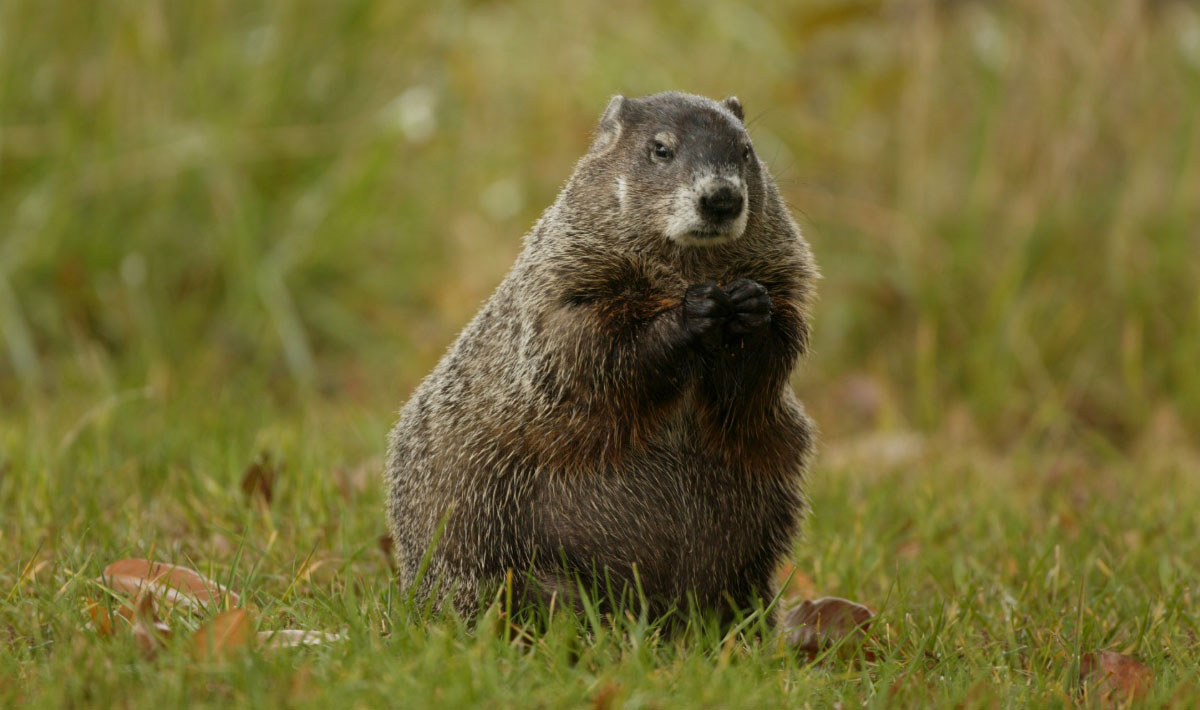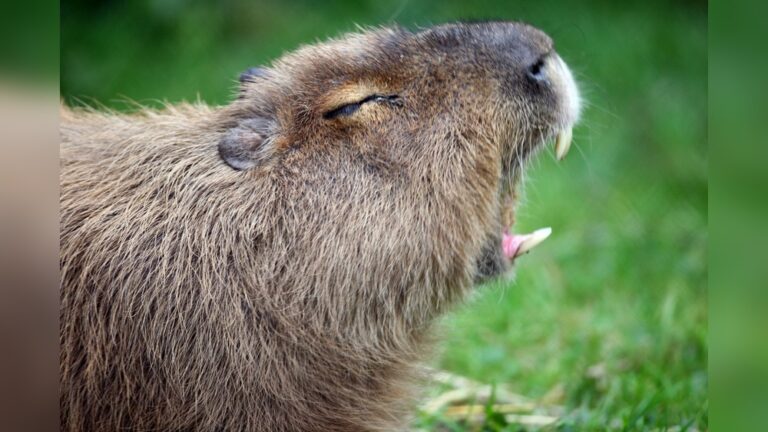Groundhogs And Woodchucks: Surprising Facts You Need to Know
Have you ever wondered if groundhogs and woodchucks are the same animal or something different? You’re not alone.
These furry creatures often confuse people because their names sound so similar. But understanding the truth about groundhogs and woodchucks can change how you see nature right outside your window. Keep reading, and you’ll discover surprising facts that make these animals more interesting than you ever imagined.
By the end, you’ll be ready to impress your friends with what you know—and maybe even spot one yourself!

Credit: wildlifeillinois.org
Groundhog Basics
Groundhogs, also known as woodchucks, are common animals in North America. They belong to the rodent family. These creatures are famous for their role in Groundhog Day tradition.
Groundhogs live in many places and have unique habits. Learning about their traits helps us understand their life better.
Physical Traits
Groundhogs have a sturdy body covered with thick fur. Their color ranges from brown to gray. They grow about 16 to 26 inches long. Their short legs have strong claws for digging. A bushy tail measures 6 to 7 inches. Their sharp teeth help them chew plants.
Habitat And Range
Groundhogs live in open fields, forests, and farmland. They prefer areas with loose soil for burrowing. Their homes have tunnels and chambers underground. Groundhogs are found across the eastern United States and Canada. They avoid dense forests and desert regions. These animals adapt well to suburban areas.
Diet And Feeding Habits
Groundhogs eat mainly plants like grasses, leaves, and flowers. They also consume fruits, vegetables, and tree bark. These animals forage mostly during early morning and late afternoon. Groundhogs store fat by eating a lot before winter. They hibernate for several months to survive cold weather.

Credit: www.terminix.com
Woodchuck Behavior
Woodchucks, also known as groundhogs, show interesting behaviors that help them survive. Their daily habits and interactions reveal how they adapt to their environment. Understanding woodchuck behavior gives us a closer look at these common animals.
Burrowing Techniques
Woodchucks are expert diggers. They use strong claws to make tunnels underground. These burrows protect them from predators and harsh weather. The tunnels often have multiple entrances and chambers. Some parts store food. Others serve as a place to rest or raise young.
Daily Activity Patterns
Woodchucks are most active during the morning and evening. They spend time foraging for plants and fruits. Midday, they rest in their burrows to avoid heat. Woodchucks are mainly active during the day. They sleep deeply during winter hibernation to save energy.
Social Interactions
Woodchucks are mostly solitary animals. They mark their territory with scent to warn others. During mating season, males may interact more with females. Mothers care closely for their young until they are old enough to leave. Woodchucks avoid conflict and keep to themselves.
Groundhog Vs Woodchuck
Many people wonder about groundhogs and woodchucks. Are they different animals or the same? This section clears up the confusion. Understanding the differences and similarities helps appreciate these creatures better.
Names And Origins
Groundhogs and woodchucks are actually the same animal. The scientific name is Marmota monax. “Groundhog” is more common in the northern United States and Canada. “Woodchuck” comes from a Native American word, meaning “digger.” Both names refer to the same rodent known for burrowing.
Differences In Appearance
Since groundhogs and woodchucks are the same, their appearance is identical. They have stout bodies and short legs. Their fur is usually brown or gray. They grow about 16 to 26 inches long. The tail is bushy but short. Their small eyes and rounded ears make them easy to spot in the wild.
Common Misconceptions
Many think groundhogs and woodchucks are different species. Some believe woodchucks live only in forests. Others think groundhogs are bigger or faster. None of these are true. The two terms are just different names for one animal. This confusion often comes from regional language differences.
Groundhog Day Tradition
Groundhog Day is a unique tradition celebrated every year on February 2nd. It centers around a groundhog, also known as a woodchuck, predicting the weather. This event brings communities together and sparks curiosity about the changing seasons.
Historical Background
The Groundhog Day tradition began in the United States in the 1800s. It has roots in ancient European weather lore. Early settlers brought these customs with them. The groundhog became the chosen animal for the weather forecast. This tradition grew especially popular in Pennsylvania.
How Predictions Are Made
On February 2nd, the groundhog is taken outside early in the morning. People watch closely to see if it sees its shadow. If the groundhog sees its shadow, it means six more weeks of winter. No shadow means an early spring is coming. This simple prediction captures the attention of many.
Cultural Significance
Groundhog Day represents hope and the changing seasons. It offers a fun way for communities to connect in winter. The tradition inspires festivals and celebrations. People enjoy the mix of nature, folklore, and local culture. It remains a beloved part of American heritage.
Ecological Role
Groundhogs and woodchucks play an important role in nature. They help shape the land and support other animals. Their actions affect soil health, plants, and local food chains. Understanding their ecological role shows why they matter in the environment.
Impact On Soil And Vegetation
Groundhogs dig large burrows underground. These tunnels help air and water reach the soil. This improves soil quality and helps plants grow better. Their digging also moves nutrients around, making the land richer. Sometimes, they eat young plants, which controls plant growth. This balance helps keep the ecosystem healthy.
Predators And Threats
Many animals hunt groundhogs. Foxes, hawks, and coyotes often prey on them. These predators rely on groundhogs for food. Groundhogs must stay alert to survive. Human activities, like farming and building, also threaten their homes. Loss of habitat makes it harder for groundhogs to live safely.
Conservation Status
Groundhogs are not currently endangered. They live in many areas across North America. Still, protecting their habitats is important. Healthy habitats support groundhogs and many other species. Conservation efforts help keep groundhog populations stable. Protecting them helps maintain a balanced ecosystem.
Interesting Groundhog Facts
Groundhogs, also called woodchucks, are fascinating creatures. They live in many parts of North America. These animals are more than just weather predictors on February 2nd. They have unique traits and behaviors that make them special. Learning about groundhogs helps us appreciate nature better.
These animals dig tunnels, eat plants, and hibernate during winter. Their habits and abilities show how well they adapt to their environment. Groundhogs also have interesting stories and records that surprise many people.
Unique Adaptations
Groundhogs have strong claws for digging deep burrows. Their burrows protect them from predators and harsh weather. They have thick fur to stay warm in cold climates. Their teeth grow continuously, helping them chew tough plants. Groundhogs can run fast to escape danger. These adaptations help them survive in different places.
Surprising Behaviors
Groundhogs are good swimmers and climbers. They use their sharp teeth to defend themselves. These animals are mostly active during the day. They hibernate for about five months in winter. Groundhogs communicate with whistles and body movements. They keep their burrows clean by removing waste. Such behaviors help them live safely and comfortably.
Record Holders And Legends
Groundhogs are famous for predicting the weather on Groundhog Day. Punxsutawney Phil is the most well-known groundhog in the world. Some groundhogs live up to six years in the wild. They can dig tunnels over 30 feet long. Native American stories often include groundhogs as clever animals. These records and legends make groundhogs part of culture and history.

Credit: www.terminix.com
How Smart Pets Lover Can Help You with Groundhogs And Woodchucks
Exploring Groundhogs and Woodchucks: A Hands-On Learning Experience
Understanding the behavior and ecological role of groundhogs and woodchucks opens up wonderful practical learning opportunities for animal lovers and curious pet parents alike. Observing their natural habits, such as their burrowing behavior or their role in the ecosystem, can deepen your appreciation for wildlife and inspire responsible coexistence.
For those who enjoy connecting with nature, keeping a simple journal to note differences between groundhogs and woodchucks—like their activity patterns or feeding habits—can be both educational and rewarding. It’s also a great way to tie in lessons from Groundhog Day traditions, blending culture with biology in a playful way.
At Smart Pets Lover, we believe that every encounter with animals enriches your journey as a pet enthusiast and nature observer. If you want to learn more or need guidance on how to observe wildlife safely and respectfully, don’t hesitate to reach out via our contact page. Remember, nurturing curiosity helps build a deeper bond with all creatures—where every wag, purr, and chirp truly tells a story.
Frequently Asked Questions
What Is The Difference Between Groundhogs And Woodchucks?
Groundhogs and woodchucks are the same animal. The terms are interchangeable. Both refer to Marmota monax, a rodent in the squirrel family. They are known for burrowing and hibernating during winter.
Where Do Groundhogs And Woodchucks Live?
Groundhogs live in North America, mainly in forests, fields, and suburbs. They prefer open areas with good soil for digging burrows. Woodchucks thrive near woodlands and grassy areas where they find food easily.
What Do Groundhogs And Woodchucks Eat?
They primarily eat grasses, plants, fruits, and vegetables. Occasionally, they consume insects and small animals. Their diet varies by season, focusing on fresh greens in spring and summer.
Do Groundhogs And Woodchucks Hibernate?
Yes, they hibernate during winter months. They enter a deep sleep to conserve energy when food is scarce. Their body temperature and heart rate drop significantly during hibernation.
Conclusion
Groundhogs and woodchucks share many similarities but are not the same animal. Both are part of the marmot family and live in burrows underground. They play important roles in nature by helping soil and plant health. People often confuse them because of their habits and appearance.
Knowing the differences helps us understand these animals better. Observing them can be fun and educational. They remind us how diverse and interesting wildlife can be. Keep an eye out for these creatures in your area. They are a small but important part of the ecosystem.






